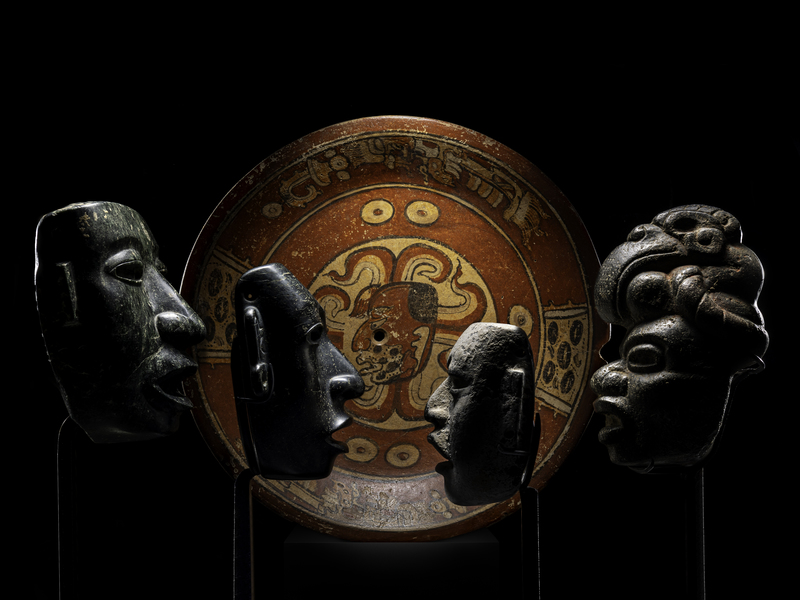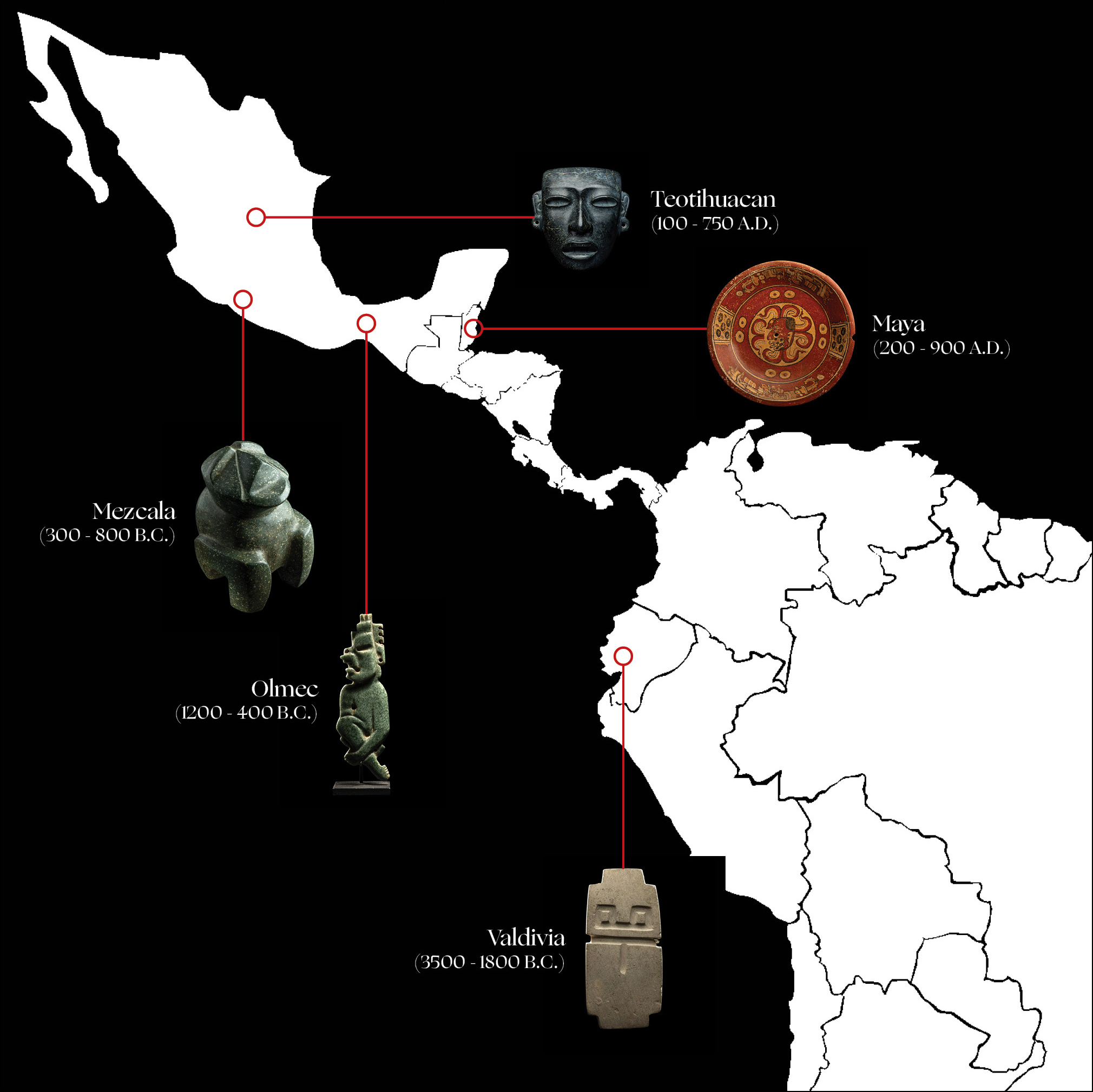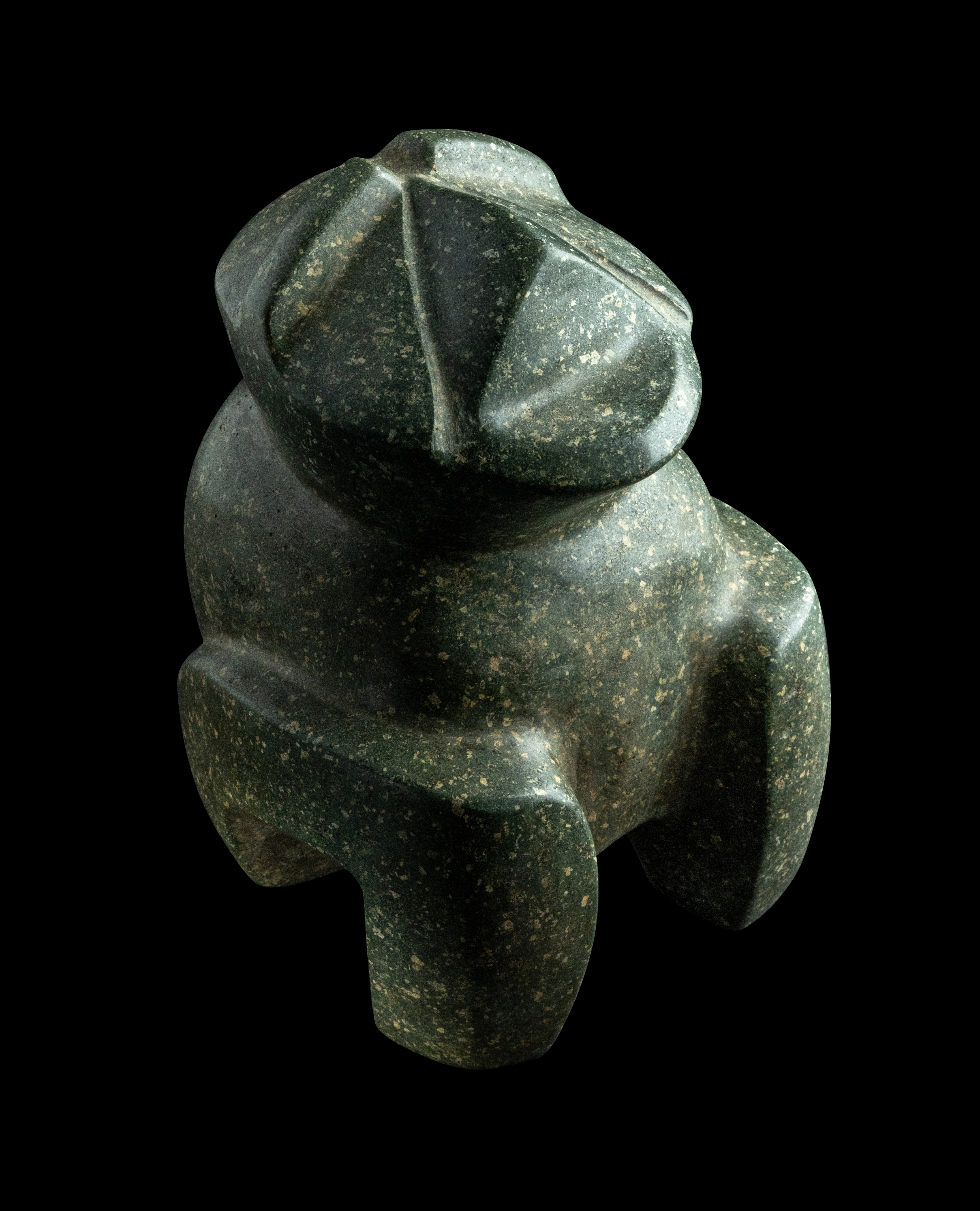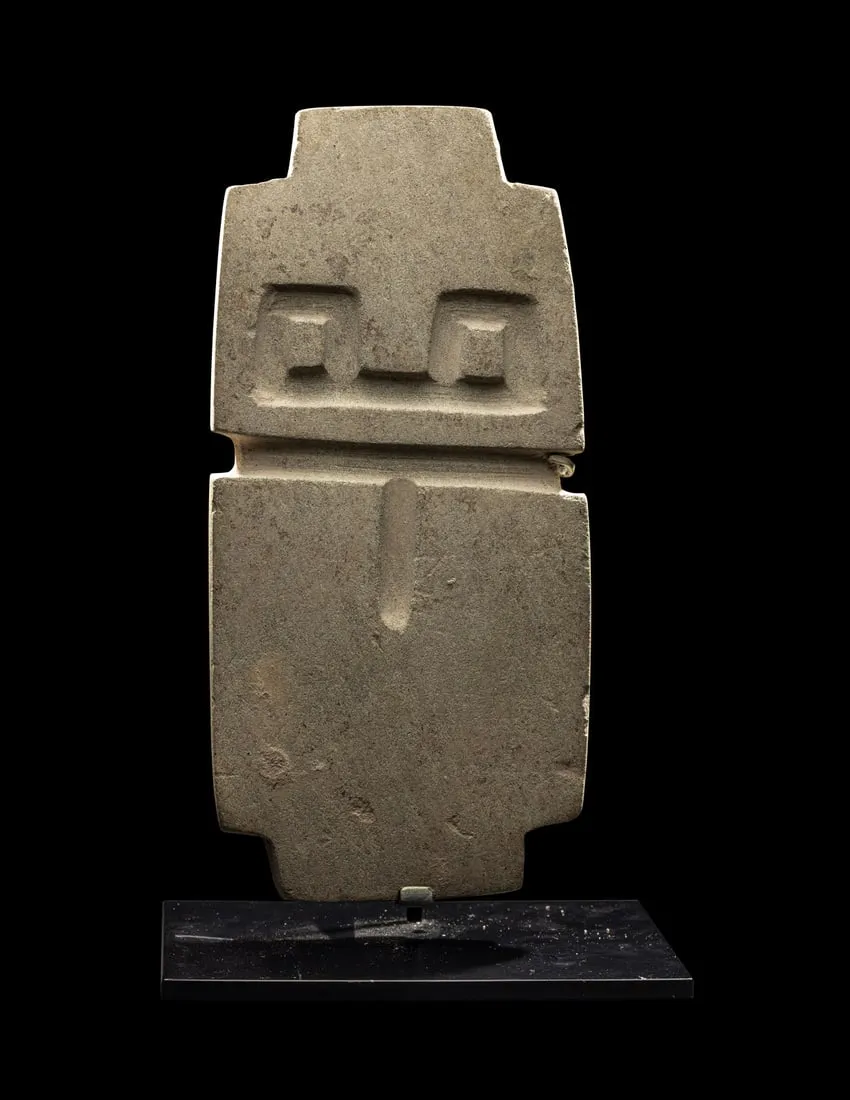
Examining Pre-Columbian Art: Abstract Expressions Across Cultures
Hindman is pleased to present our Pre-Columbian & Ethnographic Art auction this October 12 featuring 197 exceptional lots that encompass ancient Central and South America, as well as a diverse array of tribal art from across the globe. Join us in exploring a timeline of abstract expressions across Central and South American cultures.

Olmec (1200 - 400 B.C.): The Olmec civilization, often regarded as the "Mother Culture" of Mesoamerica, left behind enigmatic art forms marked by abstract symbolism. Their colossal stone heads, characterized by exaggerated facial features and intricate headgear, exhibit an abstract representation of powerful individuals. The intricate designs often carved in jade also showcase abstraction through the transformation of human to animal features, hinting at a deeper spiritual connection.
An Olmec Jade Transformation Figure

Mezcala (300 - 800 B.C.): The Mezcala culture's artistry revolves around abstract minimalism. Their stone sculptures, primarily small figurines, emphasize simplified geometric shapes that transcend specific human features. These sculptures often portray elongated bodies and smooth, polished surfaces, reflecting a fascination with form and symmetry. The Mezcala people's abstraction focuses on essential characteristics, encouraging contemplation of the universal rather than the individual.
A Mezcala Green Stone Seated ‘Stargazer‘

Maya (200 - 900 A.D.): The Maya civilization is renowned for its intricate hieroglyphs and breathtaking architecture, but their art also embraces abstraction in a distinctive way. Maya murals and pottery employ a complex visual language that blends human and divine elements, often merging into abstract representations. Their glyphs and motifs intertwine to form narratives of the cosmos, bridging the gap between the concrete and the metaphysical in an abstract tapestry of meaning.
A Maya Polychrome Plate with Deity and Glyphs

Teotihuacan (100 - 750 A.D.): Teotihuacan's artistic legacy is marked by a masterful fusion of abstract symmetry and grandeur. Beyond its iconic monumental architecture like the Pyramid of the Sun and the Pyramid of the Moon, Teotihuacan is known for its intriguing stone masks, exemplifying their unique approach to abstraction. These masks, carved with meticulous precision, convey both human and divine features in a harmonious blend. The deliberate arrangement of elements in these masks illustrates the Teotihuacan people's commitment to abstract representation. Furthermore, the geometric patterns adorning Teotihuacan's murals and ceramics reveal a society deeply attuned to cosmic order.

Valdivia (3500 - 1800 B.C.): The Valdivian culture, originating in present-day Ecuador, presents a unique abstraction through its ceramic art. Their pottery showcases abstract facial features with elongated eyes and noses, highlighting a departure from naturalistic representation. The Valdivian people's abstract expression is perhaps most evident in their anthropomorphic figurines, where the manipulation of proportions and features transcends the mundane into the mysterious.
